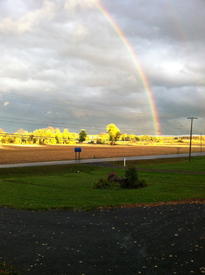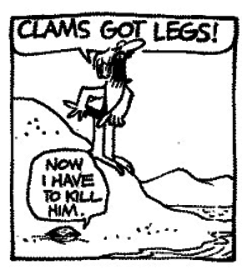Starting Strength Book Club (SSBC) - Chapters 1 & 2
Replies
-
Okay, another question, do you prefer the paper or the digital version?0
-
Digital because my husband acquired it
 Whatever you are more comfortable reading. Digital is faster to get. 0
Whatever you are more comfortable reading. Digital is faster to get. 0 -
I'm finally, finally making my way through Chapter 2 on Squats. I've read it before, but it's been a while, so rereading for our discussion purposes. A few things that I found interesting or helpful in practice (and page numbers are for 3rd ed.):
- Pages 17-18 -- MR's discussion about squat depth, which we have all discussed before in a different thread, talks a lot about how partial squats put unnecessary stress on the knees. It occurs to me, then, that one way to feel confident that I'm getting low enough is to pay attention to the amount of knee stress. This may be slightly backward thinking, but I think it will still be a good way for me to feel comfortable with my depth while I continue to lose the extra fat that keeps me from being able to see the "hip crease below knee" measurement that many use to check parallel-ness.
- Page 19 -- Discussion about foot placement and adductors has absolutely been borne out in my experience. The minute I brought my stance in to just outside shoulder-width, my adductors stopped feeling overtaxed. It's made a huge difference for me. That said, MR also talks about thighs and bellies getting in the way of each other, and how that can affect depth -- I think I may have some hindrance in this area, but that will change with time. I may also experiment with widening my stance by small degrees, but not so much that I end up bugging my adductors.
- Pages 20-21 -- MR's tip to lift the butt "straight up in the air" as if there's a chain hooked to your hips has also been HUGELY helpful for me. He says "don't think about your knees... your feet... your legs. Just drive your hips up out of the bottom, and the rest will take care of itself." While it's obviously important to pay attention to form, as one of those people who can definitely over-think things, this has probably been the most helpful piece of advice when it comes to squats, at least for me.
- Page 23 -- MR talks about setting the rack height, and making sure it's at sternum level. I'm always amazed when I see people who have to get up on their tiptoes to lift the bar out of the hooks and to put it back, which is easily 75% of the people at my gym. After 25 reps, I'm always glad I can just walk it forward and set it down, you know?
- Page 24 -- Bar Grip. Ughh. I wonder if I'll ever get this right, without a break in my wrists. I just don't know if I have the shoulder / chest flexibility. And so far, MR hasn't done a very good job of explaining where the bar should sit if using the high bar position. Sigh.
The next part of the chapter is about Leverage and Movement, so I'm going to stop here for now.
Curious to hear other folks' thoughts about the chapter and/or my comments. C. 0
C. 0 -
I'm so glad to have found this thread! I've had the book a long time, both in print and digital form, and I used to read it loads. I've returned to lifting recently and kind of forgot about the book. I was having problems with a bit of "butt wink" and read loads and loads about it - I'm quite flexible, so I didn't think that was the issue. Anyway, I thought I'd have a look at the book for old times sake and pages 46 onwards completely sorted it out! I've always pushed my knees out and my toes were turned out already ... but not quite far enough, and going a few extra degrees completely fixed the problem! I don't know why I didn't just look at the book in the first place.
@Crabada - page 24 - I found the bar grip very awkward when I first started and but now it feels very natural. I'm doing low bar squats though. (No idea how to do high bar!). Page 17 on - squat depth - at the beginning I was a fraction too high (around the "position often confused with parallel" on page 18) and had to deload and start again. I do go deep enough now, but I am STILL struggling with depth because it's so difficult to see. I often overshoot, which makes getting up again harder! I would love to have seen more models in this part, because I'm quite short with relatively big legs and when I'm at the correct depth my calves and hamstrings are touching - which I don't see in any of the pictures.
It doesn't help that I don't see other people, in real life, squatting this deep! There is a lot of squatting going on at my gym, both men and women, but it's ALWAYS quarter or half squats. It's great to have the book for reassurance about the value of deep squats, because I keep feeling I've somehow got it wrong.0 -
@Crabada - I just came across this video on bar placement and grip: https://youtube.com/watch?v=g2tyOLvArw0
I have the bar placement correct but have been hooking my thumb around the bar. Is everyone else using the thumbless grip? In my mind this might provide more of an opportunity for the bar to slip down. I'll practice it tomorrow with bar only. But was just wondering if this was the grip everyone here is using?
I really need to purchase the book!!0 -
Yup. Thanks! I actually posted that same video here a couple days ago.
 The thing is, he really only talks about the proper bar placement for low bar (on the spine of the scapula or whatever), and not where the bar should sit for high bar squats. I mean, he mentions it for about 1.3 seconds -- just long enough to say "this is not how we squat." And since his advice for those of us who can't get a straight wrist grip is to use high bar, I was hoping for a bit more info.
The thing is, he really only talks about the proper bar placement for low bar (on the spine of the scapula or whatever), and not where the bar should sit for high bar squats. I mean, he mentions it for about 1.3 seconds -- just long enough to say "this is not how we squat." And since his advice for those of us who can't get a straight wrist grip is to use high bar, I was hoping for a bit more info.
I go back and forth with a thumbless grip. I basically do whatever feels most comfortable for the set -- but since I've already admitted that my grip isn't what it should be (straight wristed), I know this is something I'll be working on.0 -
Sorry I missed that! I've been looking at so many form videos etc I kind of forget what I've seen where. Thanks! I'm going to play around with this a bit...:-)0
-
@ScientificExplorerGirl I use thumbless, and it feels very secure. (Amazingly enough I actually fell once, and put out a hand to steady myself - the bar stayed in place on my back! Don't do this at home). I feel like it SHOULD be able to slip down, but it really doesn't. I think of it as resting my hands on the bar, rather than holding it.0
-
got the book! yay @crabada and i now love you for life.
so, not lifting right now until whatever i strained/sprained/bruised in my chest settles all the way down, but i have something to read. i'm starting on page 1 and will update when i get caught up to you guys.0 -
well, i'm reading. having a little trouble this week finding clear space to do it in for some reason . . . and i might as well admit this: it's REALLY dense. i usually get through about half of a sentence like 'at the bottom of the squat the hamstrings are contracted isometrically - that is, they are stretched out proximally . . . ' and i have to stop and do about 15 seconds or so of painful visualization before i can even move on to the second half. which in this case is this: "[snip] ... even as they are shortened distally because of the flexing knees."
tbh, i'm already not good at the mental 3d modelling, and then on top of that i don't know whether it's endearing or infuriating the way he seems to think a word like 'proximal' is going to actually help me to understand what 'isometrical' means.
for those who are still with me, here's what it means. "situated nearer to the center of the body or the point of attachment". thank YOU, google search. i now have the tools to squint one eye shut and visualize what that specific sentence was talking about. as soon as i remember to remind myself what 'flexed' and 'extended' will actually mean for each of the joints in question.
so i'm still thrilled to have the book and not daunted yet, but if i got to make the suggestions for a 4th edition, i'd put a request for an up-front glossary right at the top of my list.0 -
@ScientificExplorerGirl I use thumbless, and it feels very secure. (Amazingly enough I actually fell once, and put out a hand to steady myself - the bar stayed in place on my back! Don't do this at home). I feel like it SHOULD be able to slip down, but it really doesn't. I think of it as resting my hands on the bar, rather than holding it.
I've been playing around with the thumbless grip. It seems to hurt the tendons etc around the "meaty" part of my thumb. I guess I need to keep trying different positions...Thanks!0 -
@Canadian -- Yes, definitely dense. And yes, some of his stuff just goes right over my head because I don't actually look up the vocabulary. But he's oh-so-good when he breaks it down in normal language ("Don't do this, you fool") that it's worth slogging through the other stuff. And I do pick up a lot just through context.0
-
i have a feeling it's one of those things where you process what you're able to, so kind of multiple-times through and each time i'll know enough more to absorb a bit more. anyway, went to the gym today and did the low bar with the straight wrists and i had all his hamstring lore in my head so they went pretty well. i'll take it.
thinking of skipping ahead a little to look at the ohp next. just because i've got that and deads coming up in another two days.0 -
i just came across the advice about sets and weights in the squat chapter and i'm sort of thinking about it as opposed to the sl pattern. he basically says start with the bar no matter what your working weight was, do a few sets of 5 there, and then start incrementing weight by [x] and doing one fresh set of 5 with each increase. then he basically says that when you get to the point where you 'know' you can't increase any further without harming your form, that's where you stop increasing and do two more sets right there, for a total of 3 at your working weight.
that sounds like a LOT, compared with the sl idea of warming up and then diving right into 5x5 and you're done. but it's an intriguing idea. how many sets you actually do would also depend on how much higher your working weight is than 45, and how big a jump you take each time. he says untrained people and 'kids' shouldn't add more than 15lbs each time, whereas grownups and non-novices can go up by 20-30 each time.
anyone else notice this or feel a curiosity about trying it out?0 -
Yes! I have often felt that in the SL videos by Mehdi that he really just rushed through the workout. Perhaps this was to get as many people to use his progam/app as possible.
I think that I am going to give this method a try. I think that the benefits of the volume of the workout, done with proper form will far outweigh the advantages of going up in weight as fast as you can no matter what...I am going to order the SS book and join in as soon as I receive it :-)
OMT: I have been using the thumbless grip for the last few workouts. I am getting used to it and the "meaty" thumb area isn't hurting now...So I guess I can go up to 600 lbs and not have to worry about tendonitis in my wrist 0
0 -
hee. i'm skipping through bench press right now, and i like how one of his diagram pairs shows santa claus inching his way down a chimney, and then pressing x-hundred pounds in his bobble hat and his boots. straight to the fluff, me

also interesting: first time i've ever heard anyone explicitly warn against unconsciously shoving your head into the bench to help get the bar up. another d'uh point. he says try to think of just resting your hair on the bench, not your head. i'm going to take that one in too because i have definitely heard from my neck muscles after benching.
@explorergirl, i'm going to try his progressive-weight sets as well. it might vary for different people depending on how quickly they can get their whole body online for a lift, but with squats especially i sometimes don't feel like i'm really settling into it until i'm already halfway through my working sets. so it seems worthwhile to try in my case.
the other thing he says is to start the entire squat workout by getting down into your lowest point and doing the knee-shove-with-elbows, and 'ALWAYS' doing a set with just the bar first. okay den.0 -
Personally, I think that amount of volume would be too much for me. I know what you mean about not really feeling totally locked in with form until you're already into the working sets -- I feel that way sometimes too -- but I'm not sure that's a terrible thing, as long as my form isn't bad.
I also don't think I could do 35 reps before getting to my working sets and have that be beneficial for me. Let's see -- that would be...
2x5 @ 45
1x5 @ 60, 75, 90, 105, 120
5x5 @ 135
Yeah -- no.
But I definitely want to hear how it goes for those of you who try it.0 -
well, he does say only 3 at the working weight, but your point is still valid.
guess i like the idea enough to try it out. i'm really in one of those form-evangelist moods with myself atm, so weight itself isn't very appealing to me because of the way it does cause little things about mine to degrade.0 -
Well, I guess I'm going to have to get this book! I am enjoying just lurking and learning from your comments ☺️0
-
i was reading ss on the back deck and scared the neighbours when i got to this sentence:
"A squat cannot be performed on a Smith machine any more than it can be performed in a small closet with a hamster. Sorry."
more seriously: i'm feeling talky so i'll report on my 5lb increment experience with squatting yesterday. one workout doesn't mean anything, but fwiw i liked it much better for my own purposes than the straight-in approach of 5x5. it's probably a good one for me specifically because i'm trying to keep lifting while i'm also trying to not re-injure myself AND to learn better habits early. incidentally, i spreadsheeted the difference between a straight 5x5 at what my working weight ended up being, and the incremental ss approach with only three sets at the top weight. ss gave me more volume. and it really seemed like it took me to where i couldn't have done one more set/rep, but didn't feel nearly as hard to do at any point. so i like it. so far at least.0 -
So, I did the gradual increase too for the weights on squats. I started at 40, then 50, 60, 70, 80, 85 all 1x5. Then proceeded to 5x5 @ 90. I liked that by the time I reached my working weight, I had really "dialed in" to my proper form. I am going to stay with this for a while and keep increasing as I am able.
I went online to find the SS 3rd addition. I found it at Amazon.ca but....it was $184.00 for the paperback version....what the ????? Anyway, can I ask my fellow Canadians where you all purchased it cause Chapters doesn't carry it either...TIA.
ETA---For the squats I am also changing my breathing. You often see the powerlifters take a "gulp" of air and then proceed through the entire squat (or whatever move) before exhaling and taking another "gulp". I used this technique this morning and it seems to help with the RIGID SPINE thing I can hear MR screaming in my head!!0 -
http://www.amazon.ca/gp/offer-listing/0982522738/ref=tmm_pap_new_olp_sr?ie=UTF8&condition=new&sr=8-1&qid=1423493046
$36.10 for the paperback, free shipping, or $10 for the ebook.
I have the ebook.0 -
http://www.amazon.ca/gp/offer-listing/0982522738/ref=tmm_pap_new_olp_sr?ie=UTF8&condition=new&sr=8-1&qid=1423493046
$36.10 for the paperback, free shipping, or $10 for the ebook.
I have the ebook.
Wooohoooo!!! Ordered it!!!! Thanks so much! I kept searching for it and couldn't find this---I guess they need to improve their search engine.0 -
ScientificExplorerGirl wrote: »Chapters doesn't carry it either...TIA.
i know :fury: @crabada actually ordered a copy for me because she's such a stellar human. and i guess maybe because i whined such a lot
i've noticed an unexpected effect of having this book. i'm due to go and do workout b sometime today, but my panic centres are now going 'noooo! i haven't read the dl and bp sections yet! all i know how to deal with is squats!'
groke knows what will happen when it's the next workout a, because i'm also thinking quite seriously about ditching rows and trying to learn power cleans just from reading this book. basically, i would do anything that let me out of the rows.
0 -
Hmm maybe I skimmed over that part about progression too quickly because I thought that was just to find your starting weight. So you're reading SS and you want to start its program but you don't know how much you can lift. So start with 45, then go up in smaller increments until it's that tipping point of good form and bad form. From there, you only go up by a more modest amount each time for your working weight. The difference between that and SL is that you don't work up from 45 if it's too easy. Maybe I'll re-read.
That said, I don't know if I could go that gradually all the time. For squats, I usually do the bar, then a couple at 65 if I'm feeling not warm, if not then I jump to 95, then do a couple at 115, then get on to my working weight. I do this because it's easy with the plates.0 -
honestly, i think i've given an overprescriptive impression of it. it's just casual on rippetoe's side, and the rest is me glomming onto it and re-interpreting it into my own personal context. all he said was: start with the bar. once you've got your few sets with the bar to settle your form, start incrementing one set at a time, until you find your ceiling (the one where you realise you'd lose form if you went up anymore). and then 'do two more sets'. so it's 3x5, with the difference from sl that you're doing a progressive warmup, i guess.
he doesn't prescribe the weight intervals at all, just to be fair to him. he just says 'start adding weight' and then he does give some ballpark ideas of the ranges in weight increase would be perfectly reasonable for people at different ends of the strength/experience scale. so for me, at the moment, that's 5lbs per time on the squats. for one of rippetoe's 'regular' super-heroes, that's just as likely to be 20 or 30 pounds. he's not nearly as prescriptive as mehdi, actually . . . at least not to my mind.0 -
@canadianlbs Isn't the advice on sets just for the very first workout? I took it to be just a way of finding out what workweight to start with when you begin the programme. He advises that you you should choose your increments "being conservative because it is your first day" and then ends with "and that is the first squat workout". So reading it, it seems to me that this would just be for the first workout. After that you'd go on to the usual warmup, then 3 sets of 5 at your workweight. Or have I misunderstood?
0 -
-
I was wondering because I found the programming section a bit difficult. I found it helpful to use the wikia alongside the book - startingstrength.wikia.com/wiki/FAQ:The_Program#Three_Flavors_of_Starting_Strength0
-
The book has arrived!!! Can't wait to get home so I can start reading0
This discussion has been closed.







